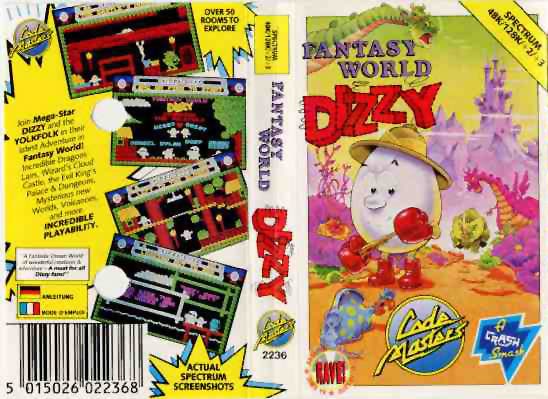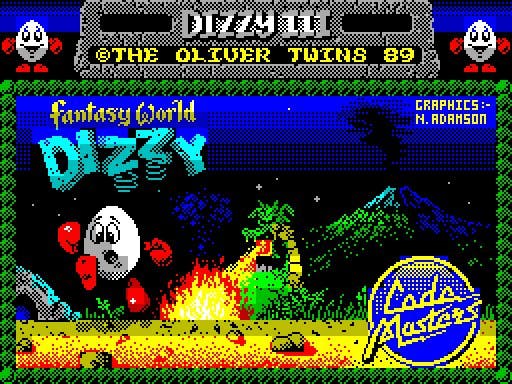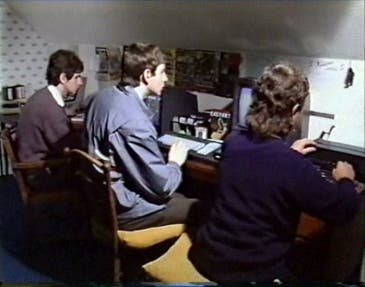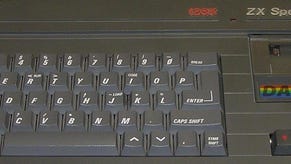Fantasy World Dizzy
The story behind the classic.
To suggest that Philip and Andrew Oliver created a mythology with their most well known and best loved character adds a weight of obligation around Dizzy's neck that he simply doesn't need. The Yolkfolk are better remembered as a modern day fairy tale told in a new and exciting way - independent stories of achievement and overcoming adversity that will be told and retold by the kids who sat at their 8-bit keyboards in awe and wonder all those years ago.
Dizzy is a symbolic icon of childhood promise and innocent adventure - a mascot of the 8-bit age and a character whose fantastic yarns have become a glistening thread woven through the fabric of gamer's lives. For many, that thread is at its most refined during Fantasy World Dizzy, and Philip Oliver stopped by to tell us all about it.
"Surprisingly, the game was a slow burner at first. I guess because nobody really knew from the box what the game was going to be like." recalls Philip - his perpetual smile and welcoming demeanour still radiating paternal pride at the mention of his best loved creation, Dizzy. "The idea was to create a new character that lived in a fantasy world - a place that allowed us to add whatever weird and wonderful things we wanted, that was fun and intriguing. Right from the outset we decided we'd have locations and puzzles inspired by classic fairy tales like Jack and the Beanstalk and The Three Billy Goats Gruff. These would be easily recognised by anyone from 6-years old and upwards, so we wanted imaginative puzzles that weren't too hard."

As with so many tales of high adventure, the hero came from humble beginnings, both in terms of story and in creation. Dizzy himself was an abstract - a game device and a character vehicle designed simply to fit within the severe restrictions of a laboured 8-bit machine. The Oliver's are just as happy to admit that art was not their strong point (despite having written their own graphics programs to achieve their needs during those embryonic days), so Dizzy was a creature born of necessity, rather than the significant childhood allegory he blossomed into. Philip continues:
"The character himself didn't undergo much design at all, I have to confess. In fact he was fully drawn, with all animations, in the space of a single morning. Our lead platform for designing games was the Amstrad CPC6128, and it could only move a limited amount of pixels around while maintaining a good speed. 8-bit computers were very slow. We had allotted a sprite of 32 pixels wide by 48 high, with only four colours for the main character. That was fairly limiting!" he laughs.
Whether by design or by chance, Dizzy became an immediate and iconographic symbol of adventurous, arcade platform gaming on the home computers; his inoffensive and convivial style attracting younger gamers, while the dynamism of gameplay and addictive, refined challenges drew in the hardcore 8-bit extremists. It may sound like a cliché or a typical, fan-boy platitude, but Dizzy genuinely was a game for everyone (especially taking into account his impressively low price tag), and from day one he became a beloved franchise.

As we look back, it seems the mechanics of gameplay and back story of the Yolkfolk was revealed slowly and over an extended range of sequels. Perhaps this is due to the huge number of joystick hours we clocked up on Dizzy and Treasure Island Dizzy, or perhaps it's because time moved so slowly back then, and has since made liars of our memories. But by the time Fantasy World Dizzy appeared in 1989, we knew this character intimately and felt inherently ready for his definitive adventure.
"We were extremely happy when the Dizzy games went straight to number one." begins Philip. "We think that everyone that had bought Dizzy must have been waiting for the sequels. After we found out Dizzy had such a huge following, we really wanted to make more great games. Fantasy World was fully designed and written in only one month - by just Andrew and me. Clearly this didn't include much sleep!"
One month to craft what has generally been acknowledged as the crowning moment in Dizzy's wonderful life. In many ways, ardent fans such as myself want to hear Philip say it was a toil of passion and labour that stretched over six months and beyond, fraught with challenge and hardship that resulted in that incredible adventure through the Wizard's lair.
Taking into account the long and vital lessons learnt during the development of Dizzy and Treasure Island Dizzy, however, the full vista of Fantasy World's creation really comes into view. The Oliver's had laid such solid foundations (damn! I promised myself I'd avoid rubbish egg puns) that this second sequel represented a culmination of irrepressible eggspertise (last one - I swear).

In 1986, when Dizzy first appeared, his engaging, gymnastic antics and dexterous puzzles were more than exciting enough to capture gamer's imaginations. Treasure Island Dizzy expanded on the concept rather than simply inventing new physical conundrums for Dizzy to overcome, though the difficulty level and trail blazing excursion into more cerebral, inventory based puzzles made for a damn difficult game, fraught with unforgiving complications. Fantasy World was the combination of these gameplay styles, and refined the demands and challenges imposed on the gamer to an impeccable maturity.
One month to write, perhaps, but it's certainly not unreasonable to say Fantasy World Dizzy was over three years in spiritual development.
But Dizzy 3 wasn't just an amalgam of the previous two games, as Philip explains:
"We knew we needed to expand the Dizzy gameplay experience, and that's why we introduced the Yolkfolk." says Philips. "These additional characters helped us introduce more narrative and story, and were also useful for giving clues."






